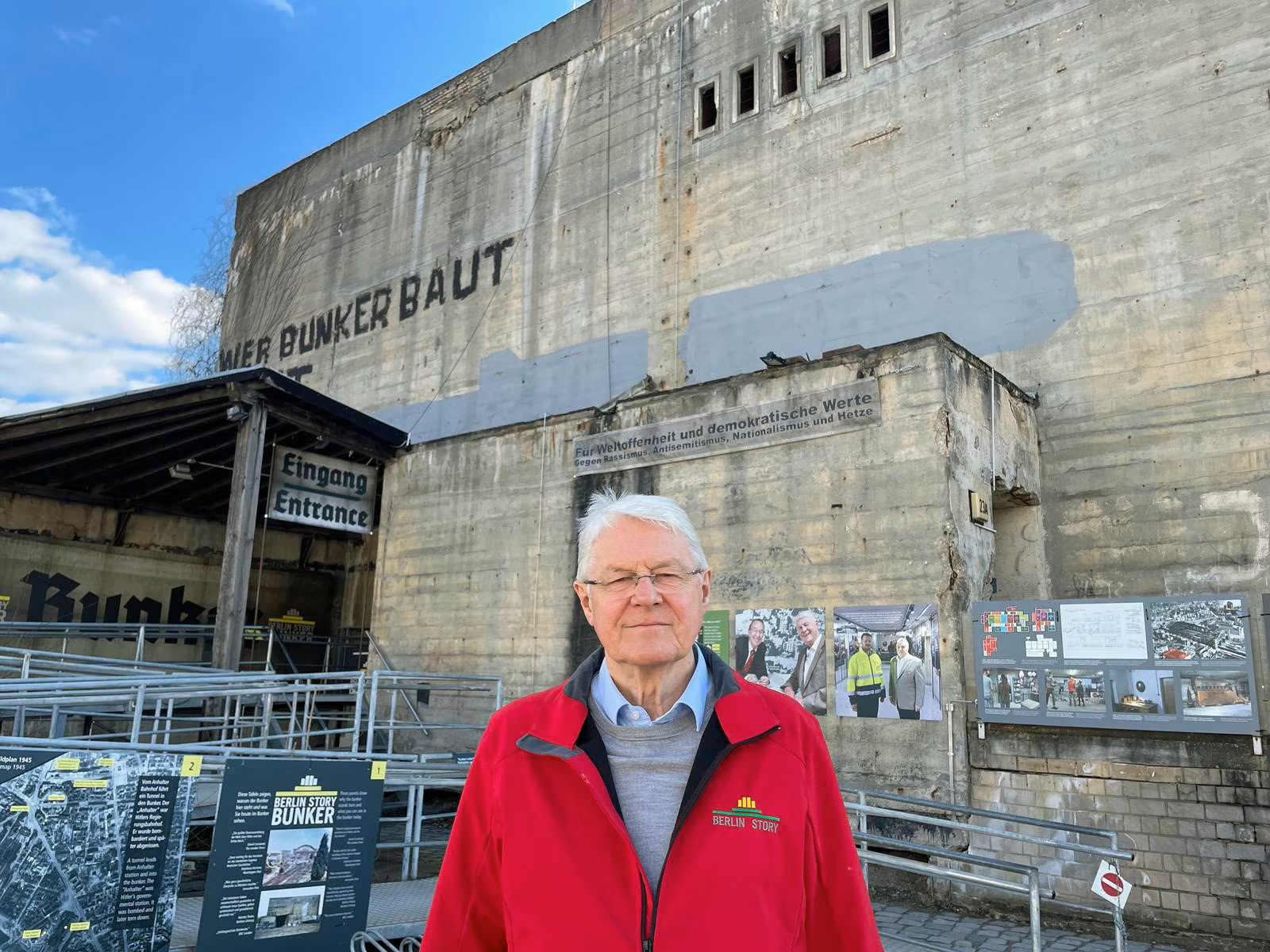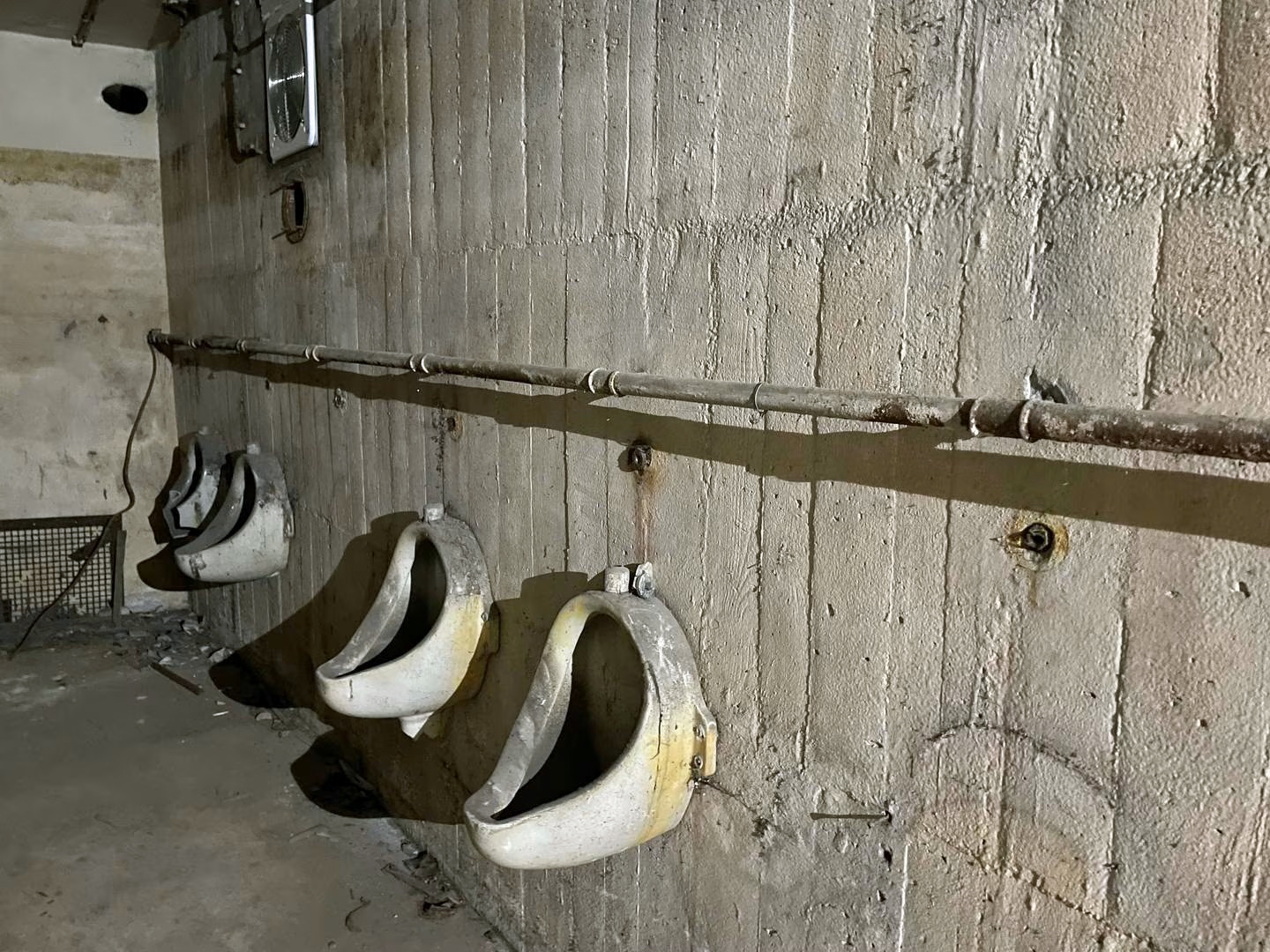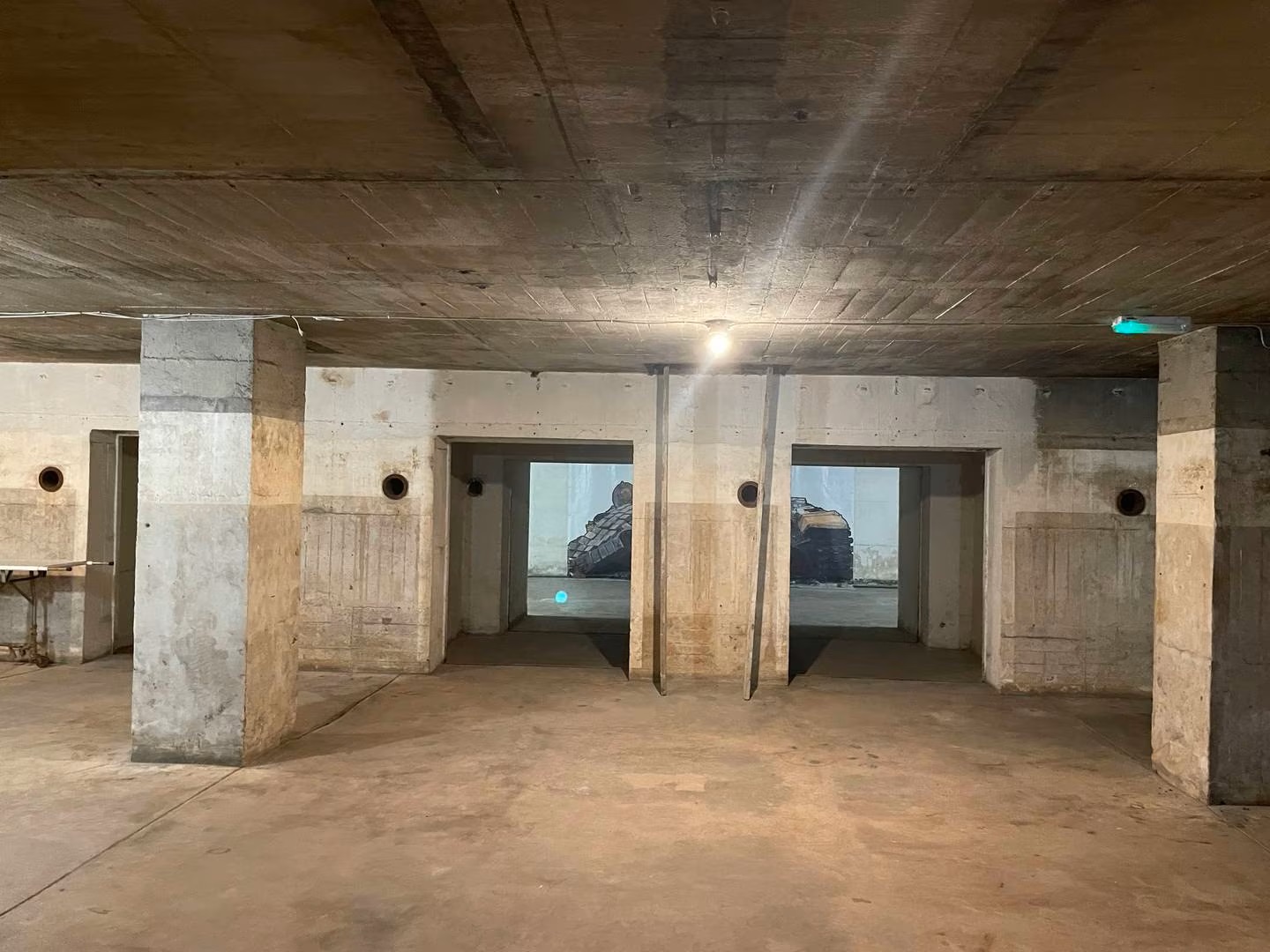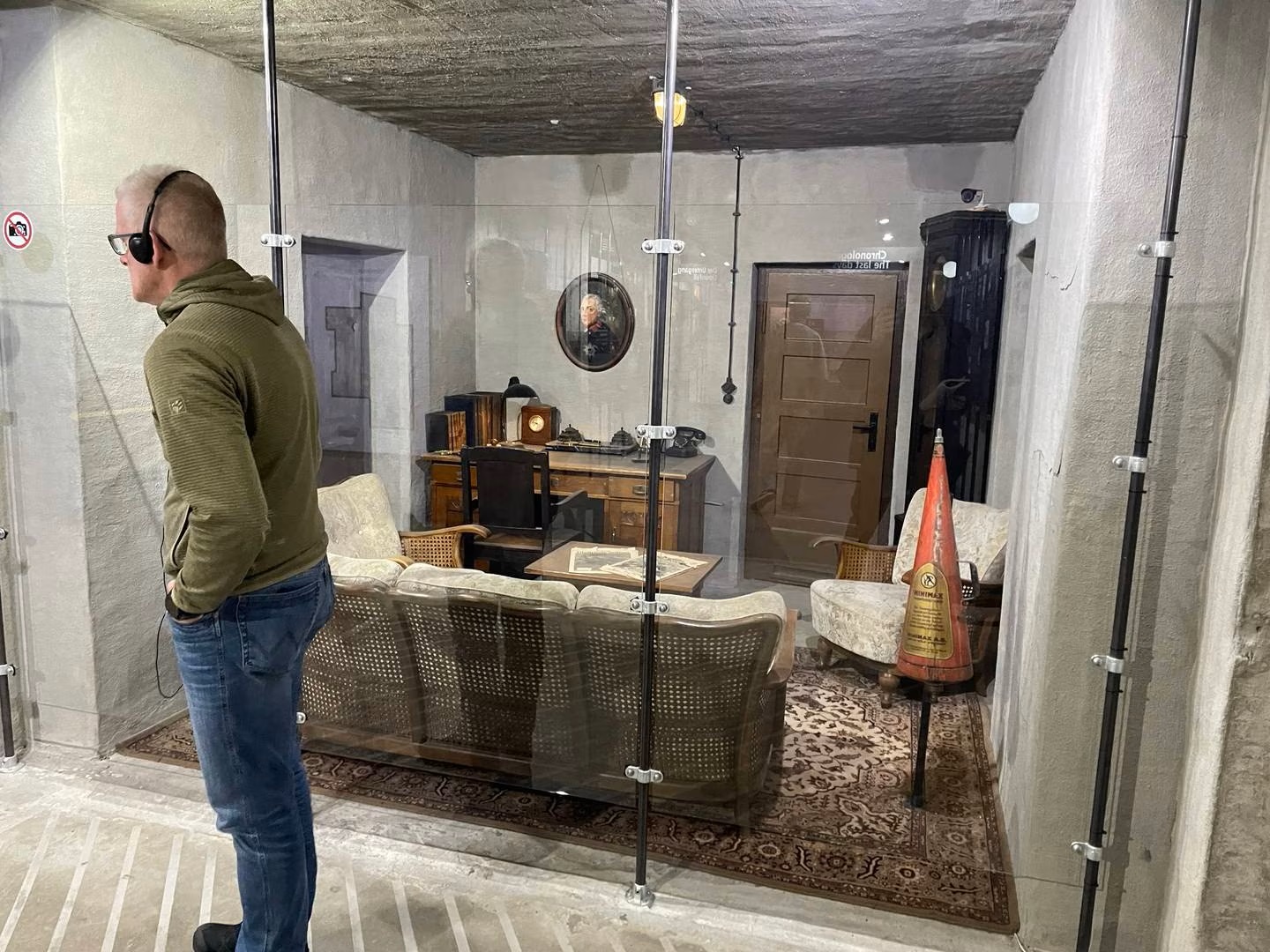
‘Hitler is a taboo here’: Berlin bunker shows how an advanced democracy can quickly slide into the abyss
Wieland Giebel’s Berlin Story Bunker is a historic warning of growing modern horrors
Derek Scally, Irish Times, Easter 2023, 09.04 2023

In the gloomy wartime bunker, there is no trace of the bright Berlin spring day outside.
A massive concrete block, five stories high, it was built in 1942 to house 3,500 civilians during air raids on the capital of Nazi Germany. By the last days of the second World War in May 1945, 12,000 terrified civilians squeezed in here.
Walking into the underground toilets, shattered urinals still hang from the wall opposite rotting cubicles where, according to eye witnesses, true believer Nazis took their own lives rather than wait for the approaching Red Army. This grim tomb is a silent witness to what Germans call the “Stunde Null” – the zero hour.
“We don’t have many authentic locations for this history, that’s why I think it is so important,” says Wieland Giebel, a 73-year-old writer and historian who turned the bunker into a documentary centre.
In the three floors overhead, visitors wearing earnest expressions and audio guides file through Giebel’s sprawling exhibition explaining Adolf Hitler’s early life and path to power 80 years ago – with disastrous results for Europe and the world.
The old-school museum – with information boards and the occasional monitor – has, since opening in 2017, attracted 350,000 visitors, who stay three hours on average.

“Professional historians and curators groan because we have no touchscreens or pull-out drawers,” jokes Giebel. “But the people who decided to come here have decided to take an intensive historical course. We want to move them, to make clear to them where an ideology like national socialism ends.”
Online reviews of the museum are hugely positive – described as a “deep dive”, “mesmerising” and “engrossing” – with many praising the demands the museum places on visitors: to concentrate, read and reflect on how an advanced democracy could slide so quickly into the abyss.
Many people know the selection ramps in Auschwitz, but it is something else entirely to see these people, naked, lying on the street, looking directly at you — Wieland Giebel
Not everyone in Berlin likes Giebel’s direct, emotional approach to the Führer, who is everywhere and nowhere in Berlin. In one way the capital’s scarred cityscape is one large open-air museum to the Nazi leader and the war he launched in 1939, which ended here six years later. Although many of the 10 million people who visit Berlin annually want to know more about the dark Nazi past and Hitler who lived and died here, Berlin authorities and public institutions are ambivalent about feeding their curiosity.
Fearful of appearing to glorify or exploit Hitler’s horrendous crimes, they prefer to take an indirect, impersonal approach.
The best example is the Topography of Terror museum, which has existed in various forms since 1987, and explains the rise of the National Socialist Party and its 12-year fascist dictatorship. But what about Hitler, without whom none of this would have happened?
“Hitler is a taboo here, whatever you do, the word Hitler must not appear anywhere,” says Giebel.

It was only in 2006 when a Berlin historian won the right to erect an information plaque on the site of the former “Führerbunker”, where the dictator’s body was burned after his suicide. Every day walking tours traipsed through the site – now a scrappy car park – and the historian wanted to be sure they had the correct facts. But permission for the plaque came only after he won a long, bureaucratic battle with the city.
When Giebel opened the bunker exhibition a decade later, he was accused by some of creating a “Hitler Disneyland” for including a recreation of the room where Hitler killed himself, complete with sofa, desk and portrait of Fredrick the Great.

Just as controversial were the rooms reproducing – near life size – an SS photographer’s images from 1941 in Lemberg (Lviv) when the Nazis rounded up the Jewish population, ordered them to strip and paraded them through the city before killing many of them.
The searing photos are shocking and deeply disturbing: a large, middle aged woman stumbles and falls; a Jewish man looks straight into the camera, eyes pleading and humiliated, as SS officers shave off his beard.
Visitors are warned about the images in advance, particularly if they have children in their group, but for Giebel they are essential to show for their shock value.
“Many people know the selection ramps in Auschwitz,” he says, “but it is something else entirely to see these people, naked, lying on the street, looking directly at you.”
Giebel’s concern for, and obsession with, ordinary people exposed to extremes is a red thread running throughout his eventful and restless life. Most recently, with his bunker partner Enno Lenze, he organised the transport of a wrecked Russian tank, abandoned in Ukraine, and displayed it before the Russian embassy in Berlin.
Unveiled on the first anniversary of Russia’s invasion of Ukraine, the tank gun pointing right at the embassy, it was a huge – controversial – attraction. But was not Giebel’s first encounter with the violence of war.

Born in eastern Thuringia in 1950, his family moved west before German division was sealed in 1961. He remembers his accountant father as a “petty bureaucrat” with a far-right newspaper subscription, whose own father led a Nazi execution squad. His maternal grandfather, with whom he recreated historic battles with tin soldiers, “hid people”, including Red Army soldiers who deserted rather than return east in 1945.
Giebel studied law in the west German city of Bochum and, with friends in smoky student kitchens, discussed Mao, the Vietnam War and the evils of imperialism. Turning theory of the latter into practice, he hitched his way to Belfast and found a job there as a student summer helper. He spent his summer in a Ford Transit van, driving around a bouncy castle to deprived neighbourhoods for local children – in both republican and unionist communities. It was a rare experience for all sides.
“Not many people went between the communities back then,” he recalls. He began documenting, researching and writing reports for an alternative German newspaper about the dire conditions and daily, arbitrary humiliations of Catholic communities at the hands of British army.
“The republican lads I knew, from the time they were children, had the maliciousness of the soldiers seared into their minds, they knew they were completely at their mercy,” Giebel says.
His curiosity trumping fear, Giebel lived dangerously on the streets of Belfast with burnt-out cars, dark streetlamps and was once caught in the middle of a three-way shoot-out between republicans, unionists and soldiers. On regular return visits to Belfast he was frequently stopped and searched by soldiers at machine gun point.
In 1981 he wrote a book about his experiences, The Short Life of Brian Stewart, dedicated to the 13-year-old he knew who died in 1976 after he was struck by a plastic bullet.
Travelling back through the looking glass from the late 1970s Troubles to West Germany, Giebel was a close observer, too, of how his homeland began, gingerly, to approach the Holocaust.
The day he got married in 1979, rather than waste a free afternoon, he dragged his bride along to an exhibition in Bochum on Auschwitz. The marriage did not last, unlike his interest in societies descending into revolution and war.
Looking to today’s Northern Ireland, Giebel is optimistic the Belfast Agreement will hold because, “unlike the 1970s, people have something to lose: prosperity”. Looking east, he is less optimistic. As curator and guide in the Berlin Story Bunker, talking to visitors daily, he notices their growing preoccupation with Vladimir Putin – who does not even feature in the Hitler exhibition.
“Many visitors tell me they fear Putin is Hitler without the Holocaust,” says Giebel “and that Ukraine is just the beginning.”